
Chalk is a village and since 1935 a former civil parish which adjoins the east of Gravesend, in the Gravesham district, in the county of Kent, England. As is intuitive, its name comes from the Saxon word cealc meaning a chalkstone.
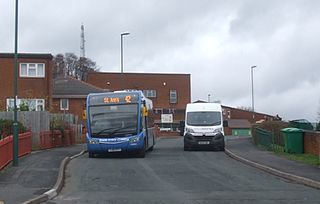
St Ann's is a large district of the city of Nottingham, in the English ceremonial county of Nottinghamshire. The population of the district at the time of the United Kingdom census, 2011 was 19,316.

All Saints' Church, Nottingham, is an Anglican church in Nottingham, England.
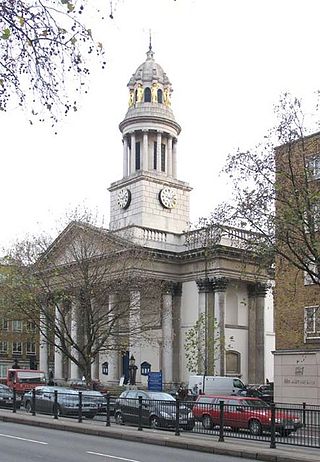
St Marylebone Parish Church is an Anglican church on the Marylebone Road in London. It was built to the designs of Thomas Hardwick in 1813–17. The present site is the third used by the parish for its church. The first was further south, near Oxford Street. The church there was demolished in 1400 and a new one erected further north. This was completely rebuilt in 1740–42, and converted into a chapel-of-ease when Hardwick's church was constructed. The Marylebone area takes its name from the church. Located behind the church is St Marylebone School, a Church of England school for girls.
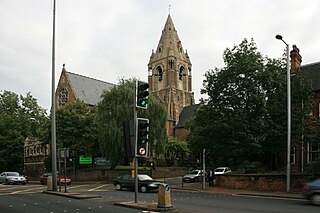
St. Andrew's Church, Nottingham in Nottinghamshire, England is a parish church in the Church of England.
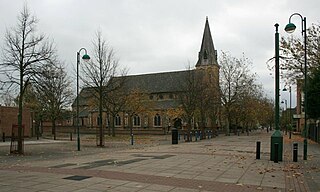
Saint Saviour's Church is a parish church in the Church of England in The Meadows, Nottingham.

St Jude's Church is a parish church of the Church of England in Mapperley, Nottinghamshire.

St. Mary's Church, Attenborough is a parish church in the Church of England in the village of Attenborough, Nottinghamshire.

St Catharine's Church, Nottingham, was a parish church in the Church of England in Nottingham.
Francis Morse, M.A. was a priest in the Church of England.
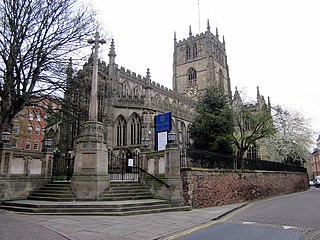
The Church of St Mary the Virgin is the oldest parish church of Nottingham, in Nottinghamshire, England. The church is Grade I listed by the Department for Digital, Culture, Media and Sport as a building of outstanding architectural or historic interest. It is one of only five Grade I listed buildings in the City of Nottingham.
The church of St. John the Baptist, Leenside, Nottingham was opened in 1844 as a parish church in the Church of England. It was destroyed in 1941.
St. Paul's Church, George Street, was a Church of England church built as a chapel of ease to St. Mary's Church, Nottingham. It was opened in 1822 and closed in 1924.
St. Matthew's Church, Talbot Street was a Church of England church in Nottingham between 1856 and 1956.
St Mark's Church, Nottingham, was a Church of England church in Nottingham, Nottinghamshire, England between 1856 and 1958. The section of Huntingdon Street where the church was located was formerly called Windsor Street.
St. Luke's Church, Nottingham, was a Church of England church in Nottingham at the junction of Carlton Road and St. Luke's Road near Sneinton between 1862 and 1923.
Emmanuel Church, Nottingham was a Church of England church in Nottingham on Woodborough Road between 1883 and 1972.

The Church of St Mary the Virgin is the historic parish church of Islington, in the Church of England Diocese of London. The present parish is a compact area centered on Upper Street between Angel and Highbury Corner, bounded to the west by Liverpool Road, and to the east by Essex Road/Canonbury Road. The church is a Grade II listed building.

St Andrew's with Castle Gate United Reformed Church is in Nottingham.

St Margaret's, Putney is situated in Putney Park Lane, Putney, London, England. It was designed by W. Allen Dixon in 1872. Prior to its dedication to St Margaret as an Anglican church it was first a Baptist and then a Presbyterian chapel under the name of Granard Chapel. It is part of the Wandsworth Deanery in the Southwark Diocese of the Church of England, and is also a member of Churches Together in Putney and Roehampton. It is a member of Inclusive Church and during Winter months it runs a homeless shelter once a week with Glass Door. The vicar is currently (2020) the Revd Dr Brutus Green.













